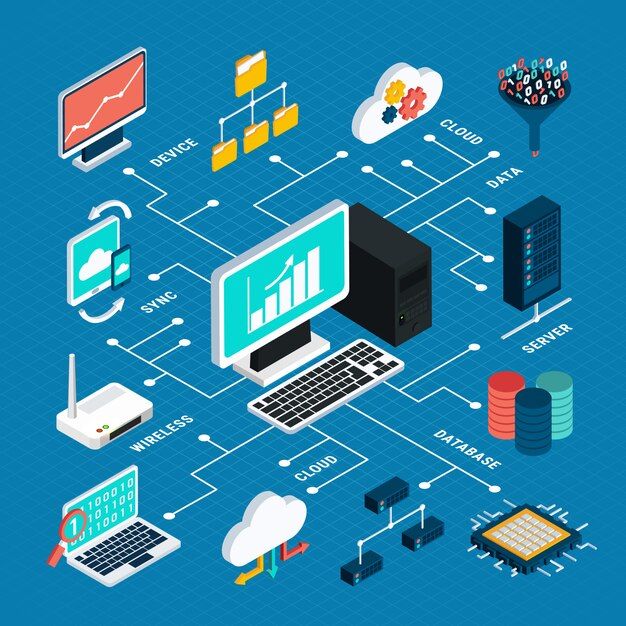
Types of Computer Network Pdf
When it comes to connecting computers and devices, networks are essential.
Computer Network Types
- LAN (Local Area Network)
- WAN (Wide Area Network)
- MAN (Metropolitan Area Network)
- PAN (Personal Area Network)
LAN (Local Area Network)
- LAN stands for Local Area Network. Think of it as a small, localized network. It's like connecting your devices within your home or office.
- A LAN typically covers a limited area, such as a single building or a campus.
- Example: When your computer and printer are connected, you've created a tiny LAN at home. They can share files and resources.
Advantages:
- Fast data transfer for file sharing and video streaming.
- Affordable setup for small businesses and homes.
Disadvantages:
- Limited coverage for connecting distant locations.
- Scalability challenges may require upgrades.
WAN (Wide Area Network)
- WAN stands for Wide Area Network. This network type spans large geographical areas. It's what connects LANs over long distances.
- The Internet itself is a massive WAN that connects the whole world.
- Example: When you send an email to someone in another country or access a website hosted far away, you're using a WAN.
Advantages:
- Offers global connectivity across cities and continents.
- Facilitates resource sharing for geographically dispersed offices.
Disadvantages:
- High costs due to long-distance communication.
- Introduces latency for real-time applications.
MAN (Metropolitan Area Network)
- MAN is short for Metropolitan Area Network. This network type covers a city or a large campus.
- It's bigger than a LAN but not as vast as a WAN.
- Example: When a city sets up free public Wi-Fi hotspots across its streets, it's essentially creating a MAN.
Advantages:
- Provides city-wide connectivity for organizations.
- Offers high-speed data transmission.
Disadvantages:
- Costly to implement in densely populated areas.
- Requires complex management and coordination.
What is PAN (Personal Area Network)?
- A PAN, or Personal Area Network, is a small-scale network designed for connecting devices within a limited area.
- This type of network is typically used for personal or localized communication.
- PANs are characterized by their short range and are often associated with devices like smartphones, laptops, wearable technology, and peripherals.
Advantages:
- Low power consumption, extending battery life.
- High level of privacy for personal use.
Disadvantages:
- Limited range for close proximity connections.
- May not support high-speed data transfer for all applications.
What is an Intranet?
- An intranet is a private network within an organization that uses Internet technologies to connect its internal resources, such as computers, servers, and databases.
- Think of it as a closed-circuit version of the internet, accessible only to authorized users within the organization.
Understanding the Internet
The Internet is a global network of networks, connecting billions of devices worldwide. Let's dive into some important Internet concepts:
Protocol
- Think of protocols as rules that devices follow when communicating over the Internet.
- It's like a language they speak to understand each other.
- HTTP (Hypertext Transfer Protocol) is one example, used for loading web pages.
Domain Name
- Domain names are like friendly labels for IP addresses.
- They make it easier for us to access websites.
- For instance, "www.example.com" is a domain name, while the IP address behind it is a series of numbers.
Internet Connections
- Internet connections are the means by which you link to the Internet.
- Common types include broadband (like DSL or cable) and mobile networks (4G, 5G).
IP Address
- An IP address is like a digital address for your device on the Internet.
- It allows data to find its way to your computer. It can be in the form of numbers, like "192.168.1.1."
URL (Uniform Resource Locator)
A URL is a web address that combines a protocol (like HTTP), a domain name (like "www.example.com"), and a specific path to a resource (like "/page1.html").
Client-Server Model
- The client-server model is the foundation of the Internet.
- Think of it as a restaurant. You (the client) place an order, and the kitchen (the server) prepares your meal.
- In the Internet world, your web browser is the client, and a distant computer (server) hosts the website you want to visit.
Search Engine
- A search engine is like a librarian for the Internet. It helps you find information on the web.
- When you type a query into Google, it scours the web for relevant websites and presents them to you.
VoIP (Voice over Internet Protocol)
- VoIP is a technology that enables you to make phone calls using the Internet rather than regular telephone lines.
- Skype and Zoom are examples. It's like talking to someone through a video call on your computer or phone.
Conclusion
Networks come in different sizes (LAN, WAN, PAN, and MAN), and the Internet is the massive global network that connects them all.